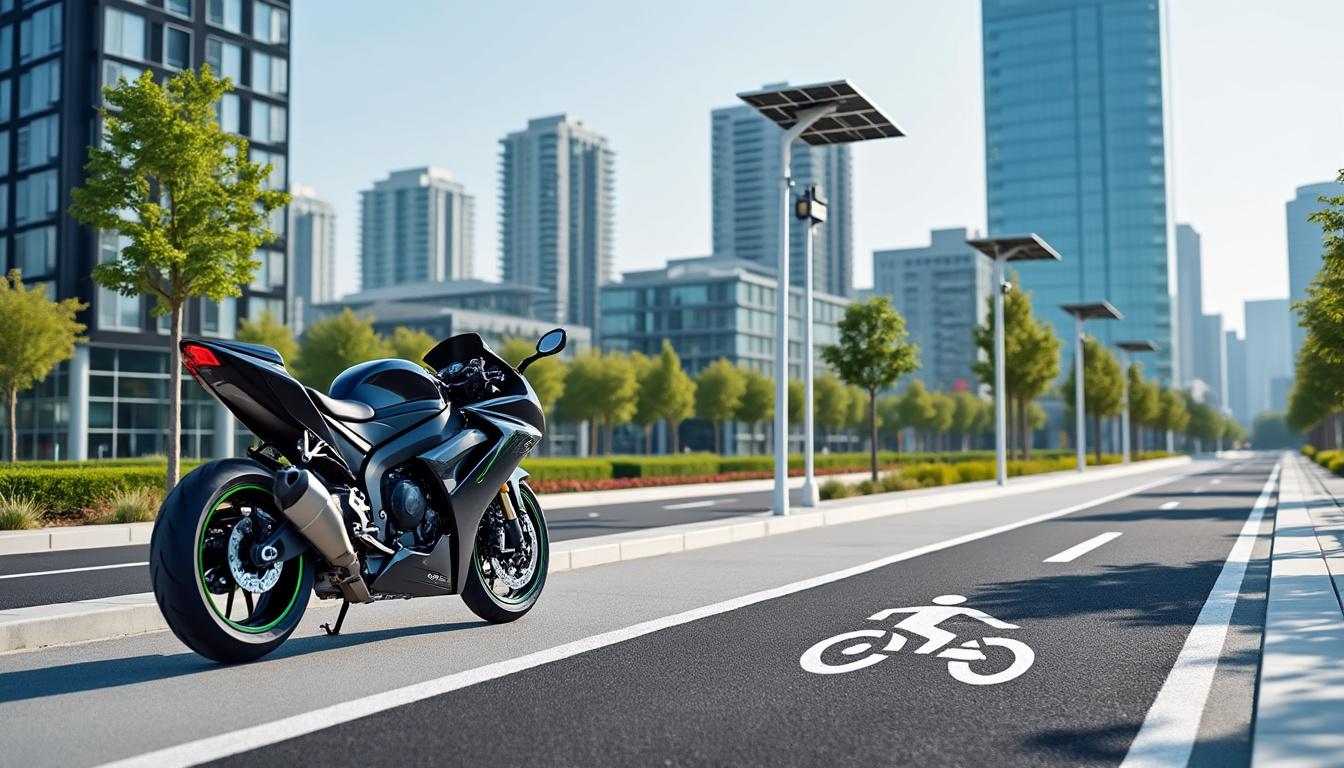Prohibition of lane splitting for motorcyclists: What you need to know

For several years, lane splitting for motorized two-wheelers has sparked numerous debates in France. Although this practice has been tolerated and experimented with, a fateful deadline looms on the horizon for motorcyclists. The regulatory changes expected in January 2025 mark a major turning point, and it is crucial to understand the implications of this new legislation that could transform the road landscape for motorcyclists. In this article, we will explore the ins and outs of this ban, its implications for road safety, as well as the various perspectives surrounding this delicate issue.
The end of the lane splitting experiment
Lane splitting was first experimented with in France in 2015, as part of a project on road safety and traffic fluidity. This project led to the implementation of tests in several departments. Despite mixed results, a second phase was launched, which was extended later on, to assess the risks associated with this practice.
The implementation of the end of the experiment is scheduled for August 2024, when all motorcyclists using this method will have to comply with the rules of the Highway Code. This will result in harsh penalties for those who violate this new regulation. Indeed, during the experiment, motorcyclists had to meet several criteria to legally ride between the lanes. It was necessary to go to one of the departments where the experiment took place and to adhere to certain conditions. Among these, we can mention:
- Exclusive use for two or three-wheelers less than one meter wide.
- Riding on fast lanes and highways, where the maximum speed is at least 70 km/h.
- Riding between the two leftmost lanes.
- Speed lower than 50 km/h compared to traffic.
Consequences of the ban
With the end of the experiments, all motorcyclists will have to comply with strict regulations, and the penalties for violations of lane splitting are deterrent. In case of non-compliance with the rules, drivers can be sanctioned:
| Action | Penalty |
|---|---|
| Unauthorized lane splitting | Fine of €135 and 3 points deducted from the license |
| Failure to comply with riding conditions | Fine of €135 and 3 points deducted from the license |
These measures are in place not only to ensure compliance with the law but also to guarantee the safety of motorcyclists on the roads. One of the major concerns is to ensure the balance between traffic flow and the safety of vulnerable road users, such as motorcyclists. Moreover, the French Federation of Angry Bikers has already scheduled discussions with the Road Safety Delegation to address the implications of this ban.

The stakes of road safety
Road safety is a fundamental issue when it comes to regulating lane splitting. Accidents involving motorcycles are often tragic, and alarming statistics compel authorities to act. The Motorcyclists' Mutual has often highlighted the importance of strict rules to protect the most exposed road users.
During the experiment, several studies highlighted the potential dangers that lane splitting could pose, but also the benefits in terms of traffic fluidity. For example, studies have shown that rapid movements between lanes, when done correctly, can reduce travel time and decrease congestion. However, the disorganization caused by uncontrolled riding remains a reality that the government must face.
- Raising awareness among motorcyclists: Motorcyclist safety requires in-depth education on best practices regarding riding.
- Behavior of car drivers: Car drivers must also be informed about the risks associated with motorcycles between lanes.
- Ongoing training: Integrating lane splitting best practices into the motorcycle driving test could improve the situation.
Case studies and incidents
Numerous tragic cases have highlighted the consequences of lane splitting, including accidents with irreversible outcomes. The case of a motorcyclist tragically killed in Vendée, for example, reminds everyone of the importance of strict regulation. Such incidents underscore the need for a balanced approach that prioritizes not only traffic fluidity but above all the lives and safety of motorcyclists. Discussions around motorized two-wheel legislation reflect varied priorities but must converge toward a responsible and safe solution.
In this fight for a better balance, players like Bureau Veritas, involved in road safety assessment, collect crucial data that will inform future decisions. This demonstrates a desire to build a more secure legal framework for two-wheel users.
Alternatives to lane splitting
With the ban on lane splitting looming, motorcyclists will have to find other strategies to navigate traffic safely. Alternative solutions are crucial to minimize the inconveniences caused by this new legislation.
Road safety agencies and researchers propose several options to improve the experience of motorcyclists in urban environments:
- Improvement of infrastructure: Investing in dedicated lanes for two-wheelers, such as bike lanes, would contribute to ensuring safety while improving traffic flow.
- Promotion of awareness: Encouraging motorcyclists to attend awareness sessions to learn how to navigate safely during rush hours.
- Encourage the use of technology: Using apps to plan routes and avoid traffic jams.
The Road Safety Prevention also calls for public policies that promote the integration of the needs of two-wheelers. Cooperation between local authorities and associations such as the La Poste Group could lead to new solutions, for instance, by improving parking management for motorcycles.
The role of insurance companies
Insurers must also adapt their approach to this new reality. Companies like Motorcycle Insurance are called upon to evolve their products and offer specific services for motorcyclists. Solutions such as offering discounts on insurance premiums for those who participate in road safety training could be considered.
| Proposed alternatives | Benefits |
|---|---|
| Improved infrastructure | Increased safety for two-wheelers |
| Awareness sessions | Better understanding of behaviors to adopt |
| GPS technologies and apps | Optimized routes and reduced stress while driving |

Future perspectives on two-wheeler regulation
The regulation of motorized two-wheelers is constantly evolving. As the end of lane splitting experiments approaches, it is essential to look ahead to consider an appropriate regulation that can meet both the needs of motorcyclists and the requirements of road safety.
Road safety stakeholders, such as the French Federation of Angry Bikers, are fighting for improvements and to create clear guidelines. The question of legislation also raises the possibility of creating dedicated spaces for two-wheelers, thus promoting smooth and safe traffic.
Innovation and awareness
The development of new technologies could also play a crucial role in the evolution of traffic management for two-wheelers. Furthermore, the implementation of sensors on roads to provide real-time information about traffic conditions could offer motorcyclists better control and responsiveness to potential situations.
Raising awareness among users, whether motorcyclists or drivers, will be essential. Whatever action plan is established, it is imperative to address these issues from the perspective of cooperation in order to achieve harmonious coexistence on the road.
In conclusion, it is fundamental to integrate the notion of ecological approach into the reflection on two-wheel movements. Promoting increased use of motorized two-wheelers to alleviate congestion in cities and reduce carbon footprint should be part of the development axes of infrastructure.
Leave a Reply



Articles relatifs